
On 26 November 2022, it was 100 years since Howard Carter peered through a hole in the O entrance to the chambers of Tutankhamun's tomb and saw "wonderful things". It was to be one of the greatest archaeological discoveries of all time.
Before Carter discovered the tomb in November 1922, Tutankhamun was an obscure pharaoh, but far from unknown. It was known that he had started life as Tutankhaten and had been married to Ankhesenpaaten, the third daughter of the 'heretic pharaoh' Akhenaten and the queen Nefertiti, and that he had ruled briefly under this name at the city of Akhet-Aten (modern Amarna, about halfway between Cairo and Luxor).
This city had been founded by Akhenaten in honour of a single deity, the Aten. This abandoned Egypt's traditional polytheism of many gods presided over by 'the king of the gods', Amun-Ra.
However, after a few years, Tutankhamun changed his name in respect of the god Amun and returned to the old religion (his queen becoming Ankhesenamun at the same time). He was known to have ruled for a total of about nine years. Despite this, his association with the heretic regime meant that later kings excluded his name from king lists and usurped his name on monuments.
Carter was confident that Tutankhamun's tomb lay in the Valley of the Kings (at Luxor, in Upper Egypt), because a cache of leftover materials from the king's funeral had been found there in 1907. He was right, of course - it had been preserved under a thick layer of concrete-hard flood deposits.
This story is from the {{IssueName}} edition of {{MagazineName}}.
Start your 7-day Magzter GOLD free trial to access thousands of curated premium stories, and 9,000+ magazines and newspapers.
Already a subscriber ? Sign In
This story is from the {{IssueName}} edition of {{MagazineName}}.
Start your 7-day Magzter GOLD free trial to access thousands of curated premium stories, and 9,000+ magazines and newspapers.
Already a subscriber? Sign In

TAKE IT SLOW
Slow running is a fitness trend with some hard and fast science behind it
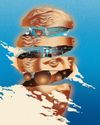
Physics, AI and music share a common thread. You just have to know where to look
Studying science can lead you in many directions and open doors to unexpected possibilities along the way
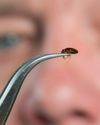
BED BUGS VS THE WORLD
When bloodthirsty bed bugs made headlines for infesting Paris Fashion Week in 2023, it shone a spotlight on a problem that's been making experts itch for decades: the arms race going on between bed bugs and humans
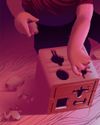
Kids are the key to understanding obesity. But we need more of their genes...
We can unravel the role that bodyweight plays in disease, but we need a bigger, more diverse, sample of genetic material to do so

COVID inquiry: What did we learn and what can we do better in future pandemics?
Masks, social distancing, lockdowns... how effective was the UK's response to the COVID-19 pandemic?
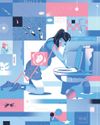
One hormone could be the key that unlocks a cure for morning sickness
The nausea and vomiting that, in extreme cases, can endanger mothers and babies might soon be just a memory

THE WORLD'S WEIRDEST CREATURES
Under the sea and upon the land, some animals look - to us - pretty strange...
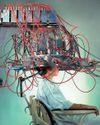
WHEN MIND AND MACHINE COLLIDE
First, Elon Musk wanted to make electric cars ubiquitous, then he wanted to make space exploration a private enterprise. Now, with Neuralink, his newest venture, Musk hopes to merge humans and artificial intelligence. Turns out, it might not be such a crazy idea...
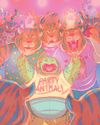
COME OUT OF YOUR SHELL
Social anxiety is more than just being shy. It's a phobia born out of our evolutionary past. But that raises a puzzling question: why do so many of us fear human interaction when we're supposed to be the most sociable species on the planet?

SPACE ODDITIES
Take a tour of the weirdest spots in the universe, where the 'normal' rules don't apply. Places that squeeze time, blow bubbles and even rain glass... sideways